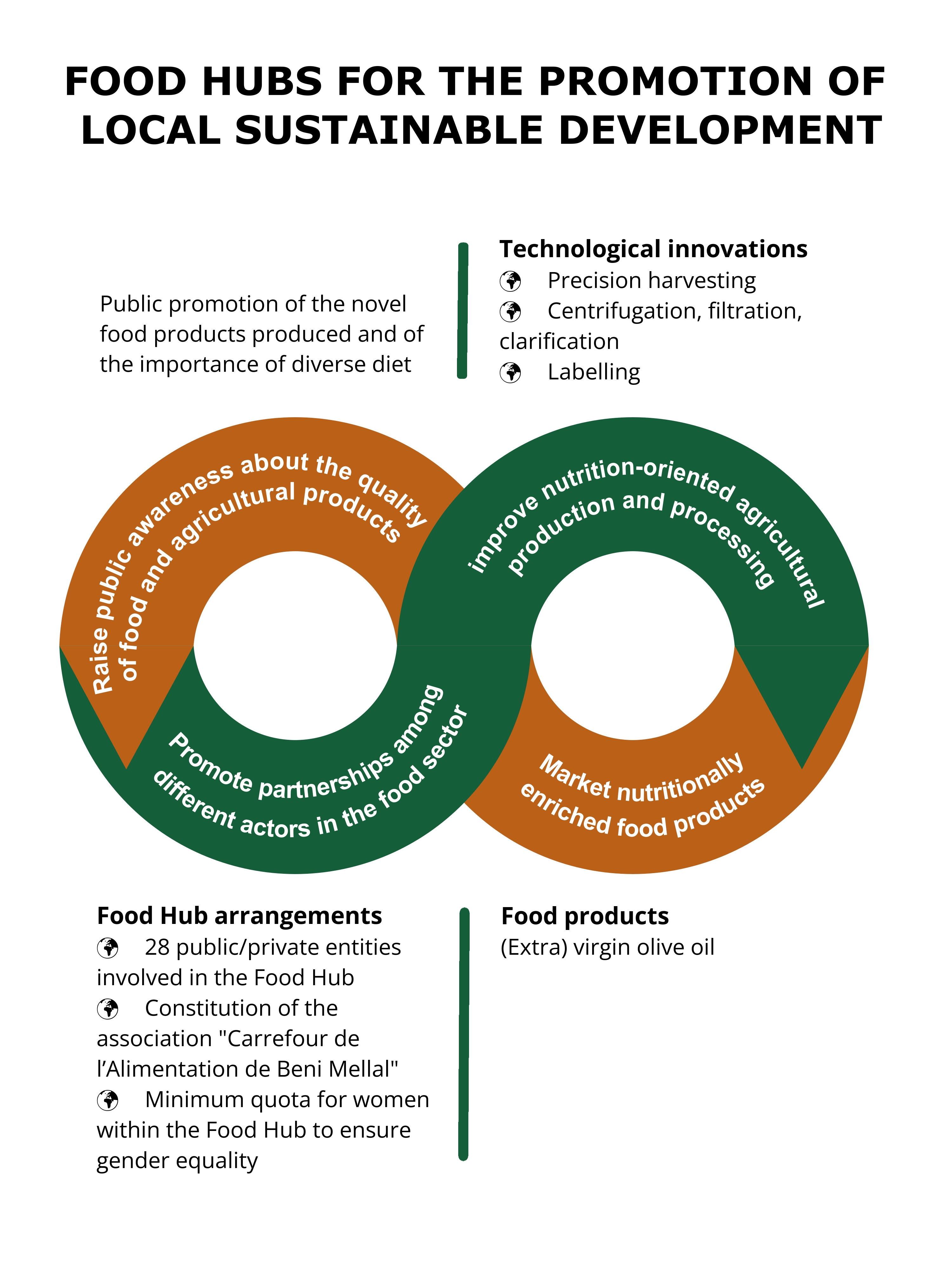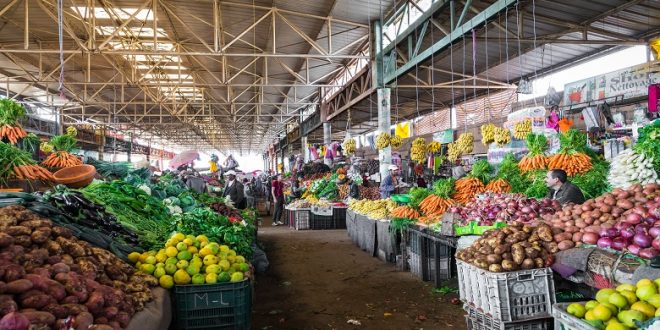The Béni Mellal-Khénifra Region is located in north-central Morocco and registered in 2020 with a population of 2,613,137 people.
The Moroccan diet comprises more of meat, cereals and less of fruits and vegetables.
Though both undernutrition and overnutrition exist, the rates of undernutrition are reducing whereas those of overweight and obesity are increasing across most stages of the lifecycle.
At the younger age of childhood, overnutrition affects more boys than girls and by the age of adolescence henceforth, the prevalence of overnutrition is higher among the women. In adults, obesity is more of an urban and female phenomenon.
Anaemia, which is a relatively common problem, affects 37.20% of pregnant women, 33% of women of childbearing age and 18% of men. In contrast to pregnant women and women of childbearing age, whose anaemia prevalence in 2000 declined from its 1993 level, it almost doubled in men, from 9.9% to 18%.
The crops with the most important agricultural production in Morocco are wheat (47.9% of farmers produce it), olive (47.2% of farmers), onion (35%), and potato (18.8%).
Highlights about the work carried out in this Food Hub
Technological innovations in this Food Hub
Precision harvesting systems. This action aims to develop/test/implement a system for detecting the optimal harvest date at a zone level. The use of drones to assess the condition of olive groves in relation to the maturity of the fruit will make possible to decide collectively the start date of the harvest. Another objective is to develop an app that can help advise farmers on the optimal harvest date since currently the start of the harvest season is based on the individual decisions of farmers without any collective consultation in relation to the maturity of production.
Centrifugation, filtration, and clarification. This action focuses on the most appropriate conditions for performing efficient centrifugation, filtration and clarification, applied to the production of virgin olive oil in an industrial Moroccan olive oil mill. FoodLAND partners have decided to focus the experimental activity on the production of a Flavoured Olive Oil (FOO) to be used as a seasoning for new gastronomic preparations. The most promising recipe is based on the co-milling of olives and oranges and black pepper.
Highlights about the research with farmers
FoodLAND surveyed a total amount of 400 farmers in this region with the aim of improving the background knowledge of African smallholder farmers’ decision-making and of individual and contextual conditions. Just 10 out of the 400 farmers surveyed were women; all the rest were men. 65% of farmers are not members of any local farmers’ associations.
According to the information gathered from the surveys, 78.5% of farmers’ income is lower than the average income in the region, the income of 17% of farmers is about the average or somewhat higher, and only 4.5% of farmers stated an income higher than average. Nevertheless, 68% of them are able to meet their household’s food needs, 30,5% experience some difficulties, and 1.5% face serious food shortages.
Besides, they have reported major worries regarding the near future regarding the cost price increase of fertilizer or seed (3.75 on a scale from 1 to 5), drought (3.13) and income reduction (2.6).
With regard to their interest and propensity to introduce new technologies and/or productions, almost 84% of farmers are extremely or moderately interested in adopting a technological innovation (4.26 on a scale from 1 to 5).
Highlights about the research with consumers
With the aim of enlarging background knowledge of African consumers’ food preferences and behaviours and of their socioeconomic drivers and measuring the current level of dietary diversity, FoodLAND has assessed food provisioning and consumption habits both in urban and in rural areas.
In order to collect data on rural consumers’ socio-economic conditions and socio-demographics (e.g., migration), food provisioning, preparation and consuming habits and community conditions and services, while paying attention to the gender perspective, a series of surveys with randomized samples of rural consumers was conducted in this Food Hub. 500 pairs of women of reproductive age and one of their children between 6 to 23 months of age participated in the survey.
The analysis of food consumption at both individual and household levels with urban consumers provided a good measure of diet quality and diversity. FoodLAND has conducted surveys both in households and out of stores in Beni Mellal, the city paired with this Food Hub. 400 people participated in the survey. Below you can find some highlights extracted from these surveys, regarding consumers’ preferences, habits, incentives, and barriers when it comes to choosing food products for their households.
Urban consumers consider on average their household diet as moderately healthy (4 on a scale of 5). When asked about their propensity to include in their diets a new food product with augmented nutrient content (e.g., naturally improved bean with high levels of proteins and minerals) that could complement their current household diet, consumers report a high level of interest (3.9 on a scale to 5). When looking at the reasons behind the inclusion of new nutrient-dense food, Moroccan consumers rate the most the possibility of enhancing the healthiness of their household diet, their trust in doctor’s recommendations, trust in farmers or sellers, and affordability. The most rated obstacles are price, the feeling of lower food safety and potentially unfamiliar taste.
As for the reasons behind usual food purchasing behaviours, respondents in Morocco rate the most on average product characteristics (taste, aroma, colour, shape), nutrition content, food affordability (price), and their willingness to diversify or balance their diet. The food categories mostly lacking in the consumer’s household diet are on average oils, vegetables and cereal products.
Consumers were also asked about their interest in buying new local food products. They showed a high disposition to buy these local products (3.9 on a scale of 5). Among the reasons that make them choose the new local products, the three consumers rated the most were that they could afford it, it could help local farmers and it could be easily found where they usually buy food.
Zoyout Dir Beni Mellal – Khenifra (Morocco)
Paired city: Beni Mellal, Morocco (504 / MAR / MA)
Zoyout Dir Beni Mellal – Khenifra (Morocco)






